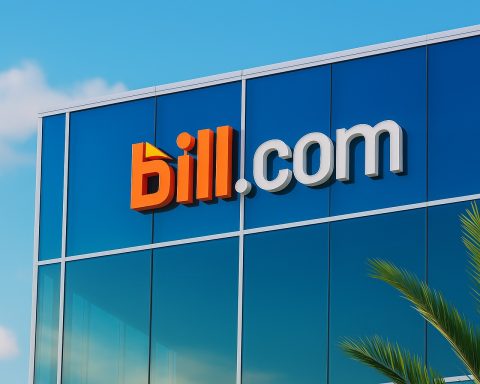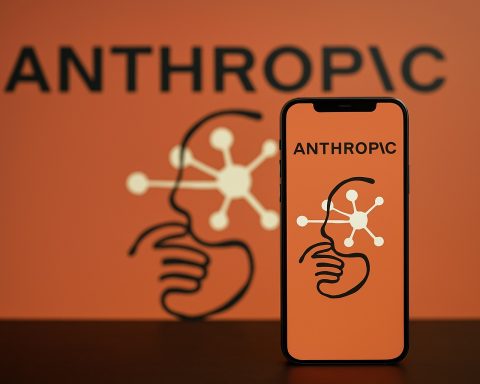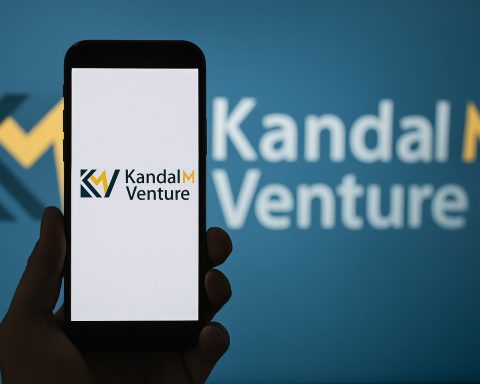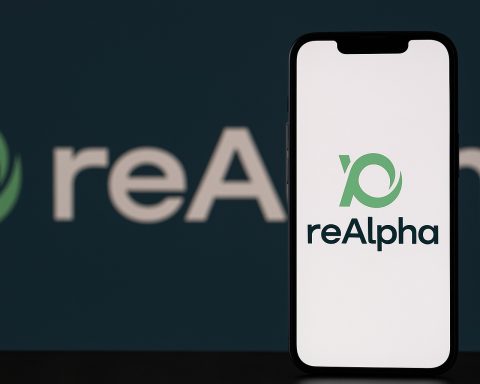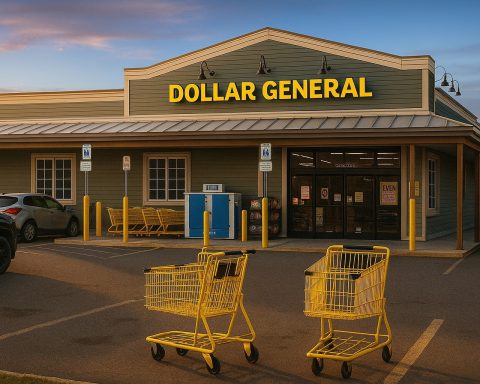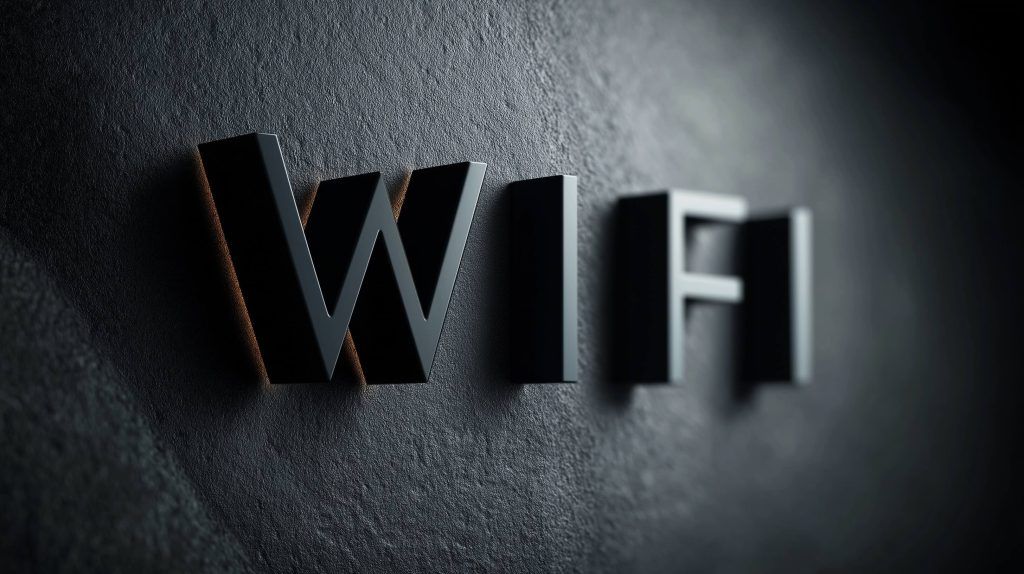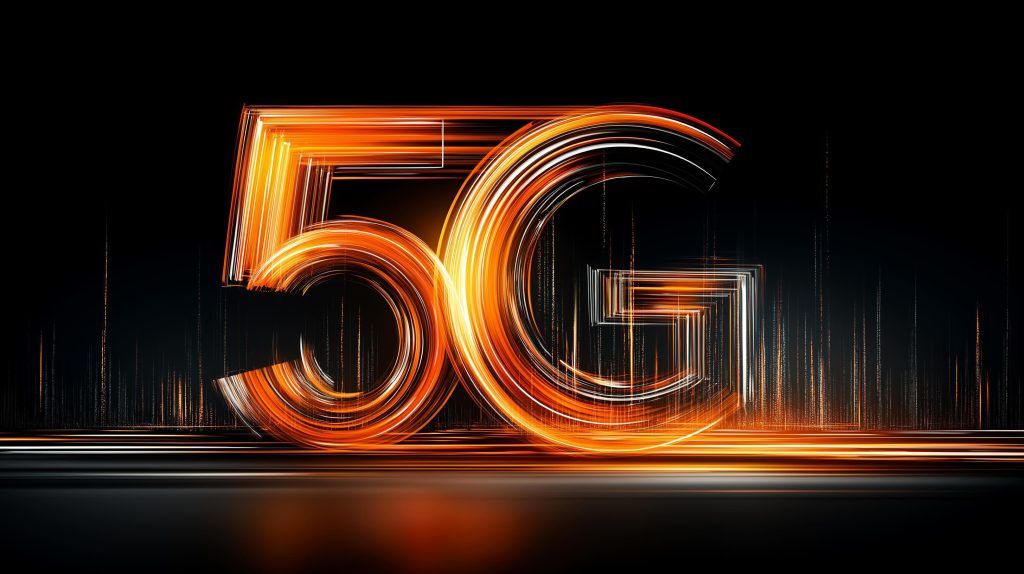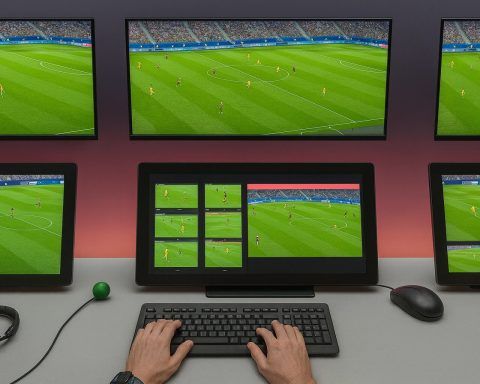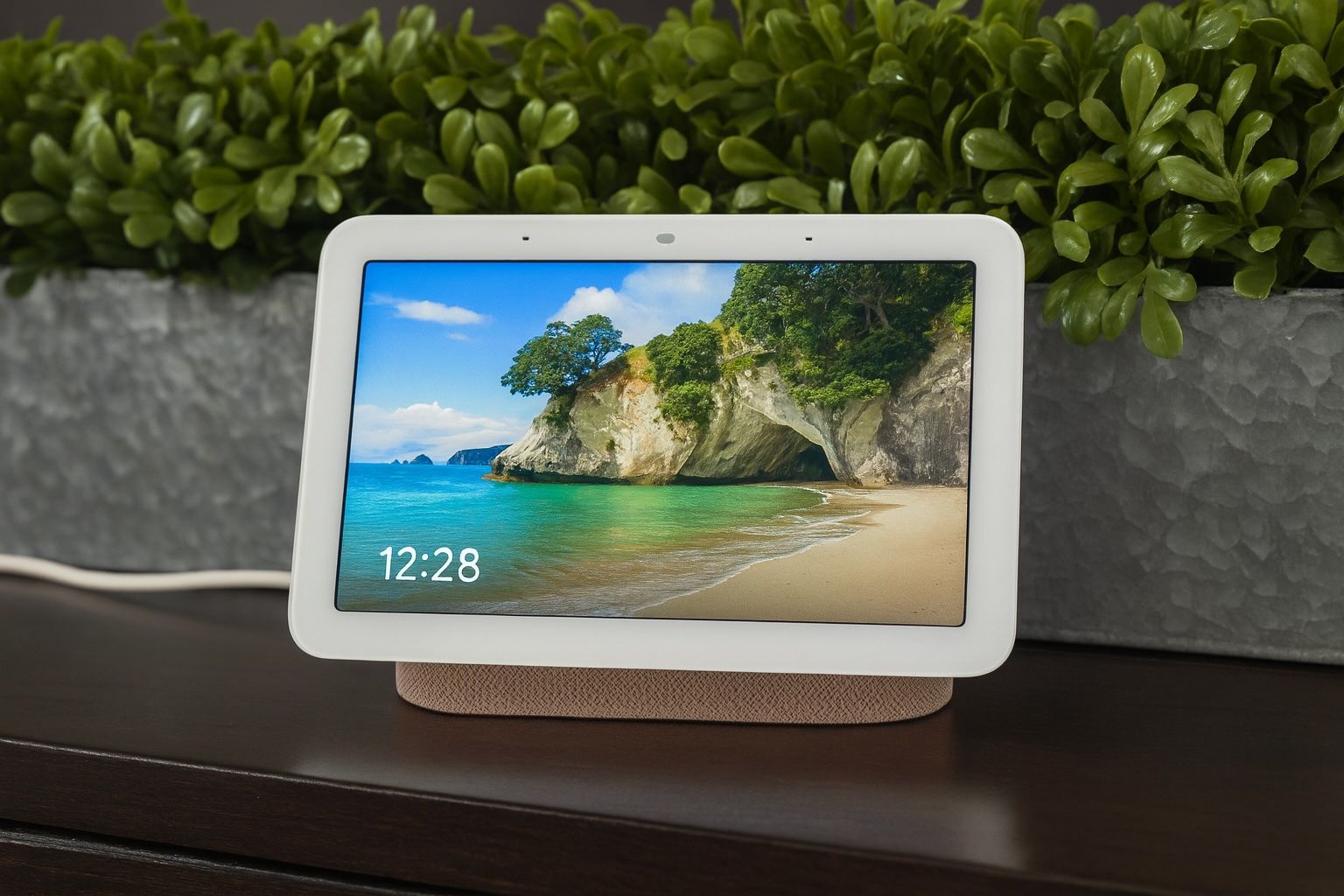- In 2024 the median U.S. household paid about $85 per month for broadband, up from roughly $76 two years earlier.
- The United States is among the most expensive internet countries, with the average broadband bill around $65–$70 per month while the UK averages about $39 and South Korea about $26.
- The average cost per Mbps in the United States is about $0.45 per month, compared with Romania around $0.06 and France around $0.10–$0.20.
- In 2025 the average advertised price for home internet among the top 20 providers was about $81 per month, with entry-level 100–300 Mbps plans at $40–$50 and gigabit plans at $80–$110+.
- Residential speeds of 100–300 Mbps are often $40–$50/month, while comparable business plans can cost $100–$150/month for the same speeds.
- Nearly half of Americans have two or fewer wired broadband options, reducing competitive pressure.
- Fiber plans in 2025 range from about $30 to $300 per month and offer the best value at roughly $0.04 per Mbps, while DSL can be $20–$55/month but as little as $13.33 per Mbps.
- In mid-2025 Comcast ended data caps nationwide, Charter Spectrum has no data caps, and the typical household uses about 700 GB per month.
- Pricing is often opaque, with 59% of Americans feeling misled by pricing and 55% saying hidden fees motivated switching; the FCC requires Broadband Nutrition Labels to disclose fees and terms.
- Federal programs like the Affordable Connectivity Program launched in 2021 offering up to $30/month off (and $75 off in Tribal areas) with over 23 million enrolled at peak, but funding was depleted by June 2024, prompting renewed legislative discussions in 2025; Lifeline ($9.25/month) and BEAD ($42.5 billion) aim to extend affordable access, while low-cost plans from providers (e.g., Comcast Internet Essentials $9.95, AT&T Access $30, T-Mobile Home Internet $50 with autopay) persist.
Are internet plans too expensive? Many Americans suspect they are – and the data backs it up. In 2024, the median U.S. household paid about $85 per month for broadband service [1], up from roughly $76 just two years prior. That puts the United States among the most expensive nations for internet access – the average U.S. broadband bill (around $65–$70) ranks in the top five globally [2]. For perspective, half of U.S. households’ combined cable TV and internet bills now exceed $121 monthly [3]. Meanwhile, countries in Europe and Asia often enjoy far cheaper service: the average broadband cost in the UK is only ~$39 per month, and South Korea’s is about $26 [4] [5]. By another measure, Americans pay about $0.45 per Mbps of speed – many times more than consumers in France, Romania, or China pay per unit of bandwidth [6]. All this raises the question: are you overpaying for internet, and what can be done about it? In this report, we’ll break down current U.S. internet pricing (for homes and businesses), compare major ISPs and regional providers, expose hidden fees and pricing tricks, look at trends over time, and examine how U.S. broadband costs stack up against the rest of the world. We’ll also discuss issues of affordability, digital equity, and the impact of government programs – pulling back the curtain on the truth about ISP pricing in 2025.
The Cost of Internet in 2025: Residential vs. Business
Residential broadband prices in 2025 remain steep. Across the top 20 U.S. internet providers, the average advertised cost of home internet service is about $81 per month [7]. Most ISPs offer entry-level plans (around 100–300 Mbps) starting at roughly $40–$50/month, while premium gigabit-speed plans often cost $80–$110+ per month [8]. These base rates usually exclude taxes and equipment fees, meaning the typical U.S. household actually ends up paying around $75–$85 monthly for standalone internet [9] [10]. By contrast, business internet plans tend to cost significantly more for similar speeds. It’s not uncommon to see a plan that costs $50/month for home users priced at $100–$150/month for businesses, due to added benefits like service guarantees and dedicated bandwidth. For example, residential broadband in some cities can be found for as low as $20/month, whereas business connections are substantially pricier for the same speed tier [11]. Small business plans might start around $50–$60/month for basic speeds [12], but more robust business packages with symmetrical speeds or guaranteed uptime can run into the hundreds of dollars per month. In short, American households typically pay on the order of $800–$1,000 per year for internet service, and businesses often pay even more.
Why is U.S. internet so expensive? A big factor is lack of competition. In many areas, consumers have only one or two high-speed ISPs to choose from – nearly half of Americans have two or fewer options for wired broadband [13]. This often leads to higher prices, since providers face less pressure to lower rates. Business customers, too, may be stuck with limited providers (or specialized carriers) and end up paying a premium for reliability. Additionally, the type of infrastructure affects pricing. Fiber-optic networks (available in some cities) can deliver much better value for the money than old DSL or satellite systems. For instance, fiber plans in 2025 range from about $30 to $300 depending on speed, offering the best value (~$0.04 per Mbps), whereas DSL plans might be cheaper in absolute price ($20–$55/month) but deliver far less bang-for-buck – as little as $13.33 per Mbps of speed, the worst value of any connection type [14] [15]. In general, fiber and cable internet are more cost-effective and capable of high speeds, while legacy DSL or satellite services charge a lot for relatively slow throughput.
Pricing Tiers, Hidden Fees, and Promotional Offers
When signing up for internet service, what you see isn’t always what you pay. ISPs tend to advertise a handful of speed tiers at attractive introductory prices, but these often come with fine print. Let’s unpack the typical pricing structure and the hidden costs that catch consumers off guard:
- Speed tiers & promos: Most major ISPs offer a lineup of plans (e.g. 300 Mbps, 500 Mbps, 1 Gbps, 2 Gbps). Each tier has an introductory or promotional rate that lasts for 12 months (or sometimes 24+ months), after which the price jumps to the “standard” rate. For example, a cable provider might promote 300 Mbps for $40/month for the first year, but after 12 months it jumps to $70/month [16]. According to Consumer Reports, the first billfor about half of new customers is higher than expected; 30% found it was $11–$25 more than advertised, and 20% saw $26+ more [17]. In 2024, internet customers who experienced a price increase reported an average hike of $20.78 per month once the promo period ended [18]. ISPs also often require autopay enrollment to get the advertised price, and some bundle in a $5–$10 discount only if you also subscribe to their mobile or TV service [19]. All these conditions mean the true ongoing price is often higher than the bold print in the ad.
- Equipment and installation fees: Beyond the monthly service cost, providers traditionally tacked on fees for the modem/router rental (typically $10–$15 per month). New legislation has curbed some of this – a 2019 federal law prohibits ISPs from charging rental fees for equipment the customer owns themselves [20]. As a result, many ISPs have dropped mandatory equipment fees if you use your own modem. Still, if you do rent their gateway, expect around $14/month added to the bill (unless the ISP includes it free on higher-tier plans). Installation and activation are another one-time cost: a professional install can run $90–$100 (for example, AT&T Fiber charges a $99 installation fee) [21], though providers often waive this for new customers or offer self-install kits. Always check if a self-install option is available to save on these upfront fees.
- Data caps and overage charges: Data caps have been a sore point for consumers. Many cable ISPs imposed caps around 1.2 TB per month, charging overage fees (commonly $10 per 50 GB beyond the cap) if you exceed that limit [22]. For instance, both Xfinity (Comcast) and Cox historically charged $10 for every 50 GB over the cap, which can add up quickly for heavy users [23]. The good news is that some major ISPs are moving away from caps under public pressure and competition. Charter Spectrum has long advertised no data caps on its plans, and in mid-2025 Comcast announced the end of its data caps nationwide, making all its tiers truly unlimited [24] [25]. (Previously, Comcast’s cap was 1.2 TB in most regions.) This change means fewer surprise surcharges for using “too much” internet – a win for consumers. If your provider still has a cap, be aware of your usage; the average household now uses ~700 GB/month [26], so a 1.2 TB cap is generous for most, but heavy 4K streaming or large game downloads can push some users into overages.
- “Miscellaneous” fees: ISPs have been known to slip in vaguely named charges like network enhancement fee, Internet infrastructure fee, or simply extra “service” fees that aren’t clearly tied to any option the consumer chose. The Universal Service Fund fee (to support broadband deployment) is one legitimate fee that some providers pass along (usually a few dollars quarterly) [27]. However, hidden fees became such an issue that 59% of Americans say they feel misled by the pricing and terms of their internet plan [28]. In a 2025 survey, 55%of respondents said hidden fees motivated them to switch or consider switching ISPs [29]. The Federal Communications Commission has responded by mandating Broadband “Nutrition” Labels – simplified fact sheets that ISPs must provide, listing all fees and terms upfront [30]. As of 2024, large ISPs are required to display these labels at the point of sale, though public awareness of them remains low. The bottom line: always read the fine print. Check for fees on late payments (often ~$10 or more) [31], early termination fees if you’re on a contract (these can be hefty, e.g. $10 for each month remaining, which could mean $200+ to break a contract) [32], and taxes (some states apply sales tax to internet service).
- Bundling and discounts: On a positive note, consumers can sometimes save by bundling services or seeking promotional credits. Many ISPs offer a discount if you bundle internet with TV or phone service (a “Double Play” or “Triple Play” bundle) [33]. For cord-cutters, bundling might not be appealing, but if you already need live TV or a home phone, a bundle can shave $10–$20 off the combined price versus buying separately. Another trend is bundling with mobile service – e.g. Xfinity and Spectrum offer discounted internet if you subscribe to their mobile plans, and Verizon and T-Mobile both give price breaks on home internet for their cellular customers. For instance, T-Mobile’s 5G Home Internet is normally $50/month (with autopay), but if you have a qualifying T-Mobile phone plan, it can drop to $35/month [34]. Such bundles essentially leverage the company’s multiple services to lock in customers, but they can provide real savings. Always weigh the total cost; a bundle is only a deal if it’s for services you actually want. And remember: promotional prices expire. Mark your calendar for when your promo ends, and be prepared to call and negotiate or switch providers at that time – many ISPs will extend a discount if you threaten to cancel. In 2024, nearly 3 in 4 consumers said they canceled, downgraded, or considered switching due to bill increases [35], which shows that loyalty often depends on keeping prices in check.
Major ISPs in 2025: What Are You Paying For?
Let’s compare the pricing practices of some major U.S. internet providers and see how they stack up, including the big national players and notable regional or alternative providers:
- Comcast Xfinity: Nation’s largest cable ISP. Offers cable internet in dozens of states. In 2025, Xfinity rolled out a new simplified pricing scheme with four main tiers – 300 Mbps, 500 Mbps, 1 Gbps, 2 Gbps – and three pricing options for each [36]. For example, the 300 Mbps plan costs $40/month with a 1-year price guarantee, $55/month with a 5-year guarantee, or $70/month with no contract (standard rate) [37]. All new plans now include unlimited data (no caps) and come with the gateway modem included [38]. This is a major shift, as Comcast previously imposed a 1.2 TB cap and charged $14 for the modem rental unless you owned your own. The new approach is aimed at increasing transparency – “no hidden fees, no confusion,” according to Comcast [39]. Still, Xfinity’s everyday prices are on the high side (e.g. $100/month standard for 1 Gbps, if you don’t lock in a term) [40], and those price locks require staying with Comcast for the full term to enjoy the savings. After losing broadband customers to rivals, Comcast is trying to win back subscribers with price and reliability claims [41] – including throwing in a free year of their Xfinity Mobile service with internet packages [42]. Summary: Xfinity’s prices range roughly from $70 (300 Mbps) up to $130 (2 Gbps) at standard rates [43], but significant discounts are available for committing to 1 or 5 years. They have eliminated data caps, but be mindful of the contract terms. Xfinity also tends to raise prices after any promotional period if you haven’t locked a long-term rate.
- Charter Spectrum: Second-largest cable ISP (renamed Xfinity in some older Time Warner Cable areas). Spectrum has a simpler lineup – often just three main plans (e.g. 300 Mbps, 500 Mbps, 940 Mbps) with no contracts and no data caps as key selling points. Spectrum’s standard rates are typically around $80/month for 300 Mbps, $100+ for gigabit, but they often offer 12-month promos (like $49.99 for 300 Mbps) to new customers. After 12 months, prices usually increase by $20–$25. Unlike Comcast, Spectrum has never imposed data caps, owing partly to merger conditions that expired in 2023. They also include the modem free, but charge a $5/mo “WiFi fee” if you use their router for Wi-Fi. Spectrum doesn’t require contracts, so you won’t face ETFs, but that also means no long-term price guarantees – expect annual increases. On the bright side, Spectrum will often negotiate your bill down if you call and threaten to cancel. Summary: Spectrum’s pricing is middle-of-the-road: decent promo prices and no overage fees, but ensure you budget for a jump to standard rates after year one. The absence of data caps is a plus for heavy users.
- AT&T Internet (Fiber): Major telecom offering fiber in ~21 states. AT&T has been transitioning fully to fiber broadband and has discontinued legacy DSL in many areas [44]. AT&T Fiber plans stand out for their straightforward pricing: no contract required, no data caps, no equipment fees. They advertise symmetrical speeds at tiers like 300 Mbps for ~$55/month, 500 Mbps for ~$65/month, 1 Gbps for $80/month, and even multi-gig plans (2 Gbps for ~$110, 5 Gbps for ~$180) [45] [46]. These prices generally don’t shoot up after a year – AT&T adopted a policy of no annual rate hikes on fiber, which customers appreciate. In fact, AT&T fiber earned high marks for “perceived value” in surveys [47]. Installation is often free or discounted (AT&T has run promos waiving the $99 install), and the Wi-Fi gateway is included at no additional cost. The biggest downside is limited availability – AT&T Fiber is available mainly in metro areas and certain suburbs. Rural customers might only have AT&T’s fixed wireless “Internet Air” or nothing at all. Summary: If you can get it, AT&T Fiber delivers fast speeds and transparent pricing (the price you see is usually the price you pay, taxes aside). $80 for 1 Gbps with no extra fees is competitive [48]. Just verify fiber is indeed offered at your address, as AT&T’s footprint is still expanding.
- Verizon Fios: Fiber-optic service in the Northeast (NY, NJ, PA, etc.). Verizon Fios similarly offers straightforward pricing with no caps or contracts on pure fiber. Typical plans: 300 Mbps around $50/month, 500 Mbps around $70–$75/month, Gigabit (940 Mbps) around $90/month [49]. Verizon often bundles perkssuch as a streaming service free trial or a router included. They also have a program called Verizon Forward for low-income households that, combined with the federal Lifeline benefit, can drop Fios to as low as $20/month for 300 Mbps [50]. Standard customers can sometimes get a slight discount by having a Verizon Wireless plan (e.g. $10 off). Verizon’s pricing has been stable; sometimes they do 2- or 3-year price guarantees. One notable offering is Verizon 5G Home Internet (a separate wireless home internet service) – priced at $50/month (or as low as $25 for Verizon mobile customers), it provides 100–300 Mbps over Verizon’s 5G network as an alternative in areas without Fios. However, where Fios fiber is available, it’s generally the better choice for speed and reliability. Summary: Fios is known for high customer satisfaction and delivers solid value: for example, $89.99 for gigabit (often with router and streaming device included) is common [51]. The catch is you have to live in Verizon’s fiber footprint.
- T-Mobile 5G Home Internet: Fixed wireless (cellular) broadband available nationally. T-Mobile’s home internet has disrupted the market in the last couple of years by offering a simple, low price and broad availability. The service costs $50/month flat (with autopay, taxes and fees included) [52]. There’s no contract, no data cap, and equipment (a 5G modem/router) is included at no extra charge [53]. T-Mobile even promises a 5-year price guarantee – meaning they won’t raise the $50 rate on you [54]. The speeds you get can vary widely: typical downloads range from ~100 Mbps up to 300+ Mbps depending on your proximity to a cell tower and network conditions [55]. The average user sees around 200–250 Mbps down [56], which is plenty for streaming and work-from-home, though uploads (10–50 Mbps) are weaker than wired fiber [57]. If you’re a T-Mobile mobile customer, you can get a bundle discount – many pay just $30–$35/month for T-Mobile Home Internet with an eligible phone plan [58]. One-third of T-Mobile’s home internet users are in rural areas, showing it’s filling a gap where cable or fiber options are lacking [59] [60]. Summary:For $50 or less, T-Mobile 5G Home is a compelling option if the performance is sufficient in your location. It undercuts most cable plans on price. Just be aware of potentially fluctuating speeds (especially during peak hours) and slightly higher latency, which might not be ideal for hardcore gamers. Verizon offers a similar 5G Home product at similar pricing, so fixed wireless from telecom companies is now a viable budget alternative for millions.
- Other Regional Providers: The U.S. has dozens of smaller or regional ISPs that offer varying deals. Cox Communications (cable in 18 states) has tiers and pricing comparable to Xfinity (and historically also used 1.25 TB data caps and fees). Optimum (Altice USA) operates cable/fiber networks in the NYC area and elsewhere, often offering aggressive promos (e.g. $30 for 300 Mbps for new customers) but with steep second-year hikes. Frontier Communications has reinvented itself as a fiber provider in many states, now selling symmetrical fiber plans (500 Mbps ~$50, 1 Gig ~$70) with no caps – very competitive, aiming to shed Frontier’s old DSL reputation. Lumen/CenturyLink in some markets offers fiber (Quantum Fiber) with straightforward pricing ($70 for gig), but in other areas only has DSL. Google Fiber (available in limited cities) remains a gold standard where offered: commonly $70/month for 1 Gbps, $100 for 2 Gbps, with an equipment router and no caps – helping keep incumbent ISPs on their toes in those locales. And then there are municipal broadband utilities and local co-ops, which in some cases provide excellent service at lower prices. In Consumer Reports’ 2024 survey, small fiber providers like EPB Chattanooga, Greenlight (NY), Allo, Sonic, and Google Fiber topped the ratings for customer satisfaction [61]. These local networks often deliver gigabit service for $60–$75 per month – showing that when competition or community investment is present, prices can indeed be more reasonable. If you’re lucky enough to have one of these alternatives in your area, you may avoid overpaying by switching to them.
Overall, major cable ISPs (Comcast, Spectrum, Cox) still tend to have higher base prices and more “gotcha” fees or rate hikes, while fiber-focused ISPs (AT&T, Verizon, Frontier) and new entrants (T-Mobile, municipal fibers) are pushing simpler, flat pricing. We’re seeing some convergence in 2025 – e.g. Comcast dropping caps and offering price-locked deals, mimicking the simplicity of T-Mobile’s offer [62] [63]. This is happening largely because competitive pressure is increasing. Cable companies lost broadband subscribers in recent quarters (Comcast lost 65k in Q1 2025) [64], as customers flock to cheaper or more straightforward options. If you feel you’re overpaying, it’s worth checking if one of these newer or regional providers serves your address. In many cases, the exact same speed can cost significantly different amounts from different providers.
Trends in Broadband Pricing (2020–2024)
Over the past five years, internet service has evolved in two noteworthy (and somewhat contradictory) ways: Americans are getting much faster connections, yet they’re also paying more money overall. Here are the key trends:
- Speeds have skyrocketed: The average fixed broadband download speed in the U.S. roughly doubled from 2020 to 2024 [65]. In Consumer Reports’ panel, the average speed jumped from 173 Mbps in 2022 to 304 Mbps in 2024 [66]. Gigabit (1000+ Mbps) offerings, which were rare luxury options a few years ago, are now commonplace in many markets – and multi-gig (2–5 Gbps) plans are emerging (albeit at high prices). Providers have steadily increased speeds on mid-tier plans as well: what was a 100 Mbps plan might now be 300 Mbps for the same nominal price. This means the “cost per megabit” of internet bandwidth has plummeted. One analysis found that the price per Mbps for popular speed tiers dropped by about 75% since 2015 [67]. Consumers are getting far more data capability for their dollar than a decade ago, thanks to technological advances and network upgrades.
- Data usage is way up: With those higher speeds and the rise of 4K streaming, cloud gaming, and video conferencing, people are using more internet data than ever. According to OpenVault’s tracking, the average U.S. household consumed ~698 GB of data per month in Q4 2024, an all-time high [68] [69]. That’s up ~9% from the year before. Nearly a quarter of all users now qualify as “power users” (1 TB or more per month) [70] [71] – a figure that has tripled since 2019. In short, our internet bills may be higher, but we’re also relying on the internet for much more. This surge in usage has put pressure on ISPs (it’s one reason some tried to enforce data caps). The positive flip side is that high usage has also been used to justify network investments and perhaps temper arguments for charging extra fees – especially now that so many aspects of work, school, and entertainment depend on robust internet.
- Monthly bills have increased: Despite the falling cost-per-bit, the average monthly charge customers pay has not dropped in proportion. In fact, broadband prices in recent years have risen a bit faster than inflation. The Tech Policy Institute’s broadband price index showed that from mid-2022 to mid-2024, internet service prices went up about 7.8%, outpacing general consumer inflation (~6%) in that period [72]. Consumer Reports’ survey of members found the median broadband bill rose from $76 in 2022 to $85 in 2024, roughly a 12% jump [73]. Why are bills rising even as technology gets cheaper? One reason is people upgrading to faster (and more expensive) tiers – the average speed has nearly doubled, so many customers voluntarily moved to higher plans which cost more. Another factor is the end of promotional discounts: ISPs often lure users with a low intro rate and then elevate the price. As noted, 84% of Americans saw a home services price increase in 2024, and for 43% of them, the internet bill increased the most among their utilities [74]. Additionally, some providers implemented general rate increases on base prices citing network improvements or inflation in costs. The net effect is that the typical consumer is paying a bit more than a few years ago, but also getting a lot more speed and data. Industry defenders argue that price-per-Mbps has never been better, which is true – in 2015 you might’ve paid $50 for 15 Mbps, whereas in 2025 you pay $50 for 300 Mbps [75]. However, from the consumer perspective, the monthly hit to the wallet ($50 vs $50) hasn’t decreased; in fact, if you add fees, it’s often higher now.
- Promotional pricing and churn: One trend from 2020–2024 is that customers have grown more savvy about switching. With fiber and wireless alternatives expanding, more people are hopping between ISPs to get a better deal. A 2025 survey found nearly 75% of consumers have canceled, downgraded, or considered switching due to price concerns [76]. This competitive behavior is slowly forcing ISPs to offer retention deals or longer-term price guarantees (like Comcast’s 5-year lock) to keep subscribers. Between 2020 and 2024, the industry saw fiber expansion (AT&T, Frontier, Lumen, etc. laying more fiber) and fixed wireless growth (T-Mobile, Verizon signing up millions of home internet users) which injected new competition especially in areas that were cable-only before. Consequently, providers that once counted on yearly price hikes with minimal loss of customers are now finding that people will leave if the price/value isn’t right. The period 2020–2024, accelerated by the pandemic’s impact, has been transformational – internet service went from a luxury/utility to an essential service, and there’s greater public scrutiny on how much it costs.
In summary, the past few years brought faster speeds and higher data use, but also slightly higher bills. The U.S. broadband market is in flux, with some early signs of price competition emerging by 2025. Still, any American who feels they’re overpaying isn’t imagining it – many are paying more in absolute terms than before, and certainly more than users in other countries. In the next sections, we’ll discuss what’s being done about broadband affordability and how the U.S. compares internationally.
Affordability, Digital Equity, and Government Programs
Broadband internet is not a luxury; it’s a necessity for work, education, healthcare, and participation in modern society. Yet affordability remains a major barrier for many Americans. Surveys consistently show that cost is the number one reason households don’t have internet. In fact, 45% of offline households cite high monthly cost as a primary reason they lack broadband at home [77]. This is a stark digital equity issue, meaning lower-income and rural communities are at risk of being left behind due to pricing.
To address this, federal and state programs in recent years have tried to bridge the affordability gap:
- Affordable Connectivity Program (ACP): This has been the flagship federal subsidy program. Launched in 2021 (successor to the Emergency Broadband Benefit), ACP offered eligible low-income households up to $30/month off their internet bill (and $75 off in Tribal areas) [78]. Over 23 million households – roughly 1 in 4 U.S. households – enrolled in ACP at its peak [79], a testament to both the level of need and the program’s broad reach. Many families were essentially getting internet for free, since major ISPs introduced $30 plans that the ACP credit could fully cover. For example, the White House announced in 2022 that 20 leading providers (including Comcast, AT&T, Spectrum, Verizon, and others) agreed to offer high-speed plans for $30 or less to ACP participants [80]. This meant millions of families could get at least a 100 Mbps connection at no out-of-pocket cost. The ACP made a huge dent in the digital divide during 2022–2023, but unfortunately it ran into a funding shortfall by late 2023. Without additional Congressional appropriations, the FCC began winding down the program in early 2024 [81]. By June 2024, ACP funding was effectively depleted and new enrollments halted [82] [83]. The end of ACP has been a serious setback: a July 2024 study found 13% of ACP recipients had already canceled their internet service when the subsidy stopped, and another 12% planned to cancel within months [84]. More than half of previous ACP participants said that without it, paying their monthly bill is now too difficult and they expect to downgrade service or drop it [85]. This shows how critical that $30 was for many budgets. The lapse of ACP funding has prompted urgent calls in Congress to renew it, and as of 2025 there’s ongoing debate about refunding or replacing the program [86]. Some states are even exploring state-level vouchers or subsidies to fill the gap [87], though nothing can fully replace a nationwide $14 billion program overnight [88]. Bottom line: The ACP dramatically improved affordability while it lasted – lifting broadband adoption among low-income homes – but its uncertain future puts many at risk of disconnecting due to cost.
- Low-income ISP plans: Even before ACP, and especially now post-ACP, many providers have their own discounted plans for qualifying customers. These are usually bare-bones in speed but very cheap. For instance, Comcast Internet Essentials offers 50 Mbps for $9.95/month, Spectrum Internet Assist provides 30 Mbps for ~$20/month, AT&T Access gives 100 Mbps for ~$30 (or 10 Mbps for $5–$10 in some areas), Cox Connect2Compete offers 100 Mbps for $9.95 for families with K-12 students, etc. With ACP, these plans were often free (the credit covered them). After ACP’s pause, some ISPs announced price cuts on these plans to help customers – e.g. in late 2024, several big ISPs pledged to keep offering $30-or-less plans for low-income users even without the subsidy [89]. Verizon’s Forward Program continues to offer Fios 300 Mbps for $30 (free if Lifeline-eligible), and T-Mobile has a $20/month plan for certain households. While these programs are commendable, their uptake historically has been modest due to lack of awareness or onerous signup verification. As of early 2023, Comcast’s Internet Essentials, one of the most successful, had about 1–2 million users – a fraction of those eligible. Now with ACP gone, outreach to let people know about these ISP programs is crucial. Consumers who are struggling with bills should definitely check if their ISP (or an alternative ISP) has a discounted plan; the speeds are lower, but often sufficient for basic needs, and the savings are significant.
- Broadband Expansion (BEAD and others): Affordability isn’t just monthly price – it’s also about access. The federal government, through the 2021 Infrastructure Investment and Jobs Act, allocated $42.5 billion to the Broadband Equity, Access, and Deployment (BEAD) program to build high-speed networks in unserved and underserved areas. Every state is now planning projects to extend fiber or wireless broadband to rural communities over the next few years. These efforts will increase competition (or at least bring service to places that had none). A critical aspect: the rules required any ISP taking BEAD funds to offer a low-cost option and to participate in the ACP (which, at the time, was assumed to exist) [90]. With ACP in limbo, states may push grant winners to still honor low-cost commitments – possibly meaning creating a plan around $30 for new networks. Additionally, the Affordable Connectivity Outreach Grant and the Digital Equity Act grants are funding digital inclusion efforts, including helping people sign up for low-cost plans. The Capital Projects Fund is another source states are using to create affordable networks (some states are building open-access fiber or municipal systems with that money). All these programs recognize that availability + affordability must go hand in hand. It’s no use laying fiber if the local population can’t afford the service. So expect to see more affordability conditions and maybe state-level subsidies as these networks come online.
- Lifeline Program: Long before ACP, the FCC’s Lifeline program has provided a $9.25 monthly subsidy for telecom services to low-income households. Lifeline can apply to phone or internet, but at $9.25 it’s relatively small. Some ISPs let customers use Lifeline toward discounted internet (often in conjunction with the ISP’s own plan). In the absence of ACP, Lifeline remains, but it’s insufficient for broadband (covering only a fraction of a typical bill). There are calls to increase the Lifeline benefit or combine it with any new ACP funding.
- Digital equity initiatives: Beyond subsidies, digital equity involves things like device access and skills training. Some cable companies, for instance, offer inexpensive or free refurbished computers to low-income broadband subscribers. Libraries, nonprofits, and schools have programs to loan out hotspots or provide community Wi-Fi. These help mitigate affordability issues by reducing data usage costs (e.g. families using library Wi-Fi instead of paying for unlimited data at home). The COVID-19 pandemic spurred a lot of one-time funding (through the Emergency Connectivity Fund) to connect students and improve digital inclusion. As that has wound down, communities are looking at sustainable solutions – such as free public Wi-Fi zones or mesh networks in housing developments. Municipal broadband is also part of the conversation: cities like Chattanooga, TN (with EPB fiber) or Amherst, MA (planning a city network) have kept prices relatively low and service quality high by treating internet as a public utility. While not widespread, some localities are considering investing in networks that can offer at-cost internet service as a long-term affordability strategy.
In summary, the affordability picture in 2025 is mixed. On one hand, millions benefited from ACP and now face uncertainty with its funding lapse. On the other, competitive forces (like T-Mobile’s $50 plan) and policy measures (like low-cost plan requirements for BEAD projects) are pushing the market toward somewhat better affordability in the long run. It’s telling that when ACP was active, many big ISPs essentially admitted they could offer a 100 Mbps service for $30 – because they did so for subsidy recipients. The challenge ahead is extending those kinds of price points to everyone, not just those in special programs. Until then, consumers should take advantage of any assistance or low-cost plans for which they qualify. With nearly half of lower-income Americans still unconnected or struggling with bills due to cost [91], closing the digital divide will require both continued public investment and pressure on providers to keep prices in check for the most vulnerable users.
Customer Satisfaction and Regulatory Scrutiny
It’s no secret that internet service providers often rank poorly in customer satisfaction. High prices, billing surprises, and subpar customer service have long frustrated consumers. Survey data confirms widespread dissatisfaction: Over 50% of broadband customers rate their ISP negatively in overall value and service quality [92]. In Consumer Reports’ latest telecommunications survey, internet providers were among the lowest-rated services relative to other consumer sectors [93]. And in a 2025 Reviews.org survey, 59% of Americans felt misled by how their internet was advertised versus what it actually costs [94].
However, not all ISPs are equal in the eyes of their customers. Fiber providers tend to score much higher than cable or satellite providers in satisfaction. The American Customer Satisfaction Index (ACSI) for 2024 showed overall ISP satisfaction improving to a score of 71/100 (up 4%), largely driven by better experiences on fiber networks [95]. Fiber ISPs averaged a satisfaction score of 76 out of 100, versus 68 for non-fiber (mostly cable) ISPs [96]. Similarly, Consumer Reports found about 69% of fiber subscribers were “very” or “completely” satisfied, compared to only 39% of cable subscribers who could say the same [97]. Fiber’s advantages – faster upload speeds, reliability, and often more straightforward pricing – likely contribute to this satisfaction gap.
Looking at specific companies, Google Fiber and local fiber muni/co-ops often top rankings for happiness, while big cable companies like Comcast Xfinity, Charter Spectrum, and Altice Optimum tend to rank near the bottom [98] [99]. In one 2024 survey of 48,000 consumers, a municipal provider (EPB Chattanooga) and a regional fiber (Greenlight in NY) received the highest scores, whereas Comcast, Mediacom, and Altice were among the lowest rated [100] [101]. The poorest scores of all went to satellite internet services (HughesNet, Viasat), reflecting their high cost and performance limitations [102].
The common consumer complaints are well-known: unexpected price hikes, confusing or hidden fees, slow or intermittent performance not matching what was advertised, data caps or overage charges, and difficulty dealing with customer support. Indeed, the 2025 Reviews.org survey found that among those who noticed their first bill was higher than expected, it was often $20+ higher than the advertised price due to fees and taxes [103]. Customers also reported an average $21 monthly increase after promo pricing expired [104], which they were not prepared for. These experiences leave many feeling burned. It’s no wonder that in that survey, 55% of people said hidden fees drove them to consider switching providers [105], and about 3 in 10 had actually switched in the past year to save money [106] [107].
Such consumer dissatisfaction has not gone unnoticed by regulators and lawmakers. In recent years, there’s been heightened regulatory scrutiny on ISP pricing and practices:
- The FCC (Federal Communications Commission) has pushed through the requirement for Broadband Consumer Labels, which took effect for large ISPs in 2023 [108]. These labels must clearly itemize the price (including any fees, discounts, data cap policies, etc.) in a standardized format, much like a nutrition label on food. The goal is to eliminate the confusion and fine print shenanigans – so consumers can “comparison shop” for internet easily. Early checks found that while ISPs have posted labels on their websites, consumer awareness is low (the Reviews.org survey indicated few people know about the labels yet) [109]. The FCC is planning outreach to make this a more prominent tool.
- Hidden fees and billing transparency have been targets of both FCC and FTC (Federal Trade Commission) action. The FTC has authority to punish “unfair or deceptive” fees. In 2022, for example, the TVPA (Television Viewer Protection Act) made it unlawful for ISPs to charge rental fees for equipment that the consumer has provided themselves [110] – this closed a loophole where some ISPs were essentially forcing rental charges. Several state attorneys general have also pressured ISPs over fees (e.g., some states sued over “WiFi fee” add-ons). We are seeing some improvements: Comcast and others now often advertise “no hidden fees” for their new pricing structures [111], a sign that the message is getting through that customers are fed up with sneaky surcharges.
- Customer service requirements and outages: Regulators are also looking at reliability and accountability. Some states (like California and New York) have explored minimum service quality standards for ISPs or easier ways for customers to get refunds for extended outages. The concept of treating broadband as a utility has been floated – which could subject ISPs to stronger consumer protection rules. In late 2023, the FCC signaled it might reclassify broadband under Title II of the Communications Act (as it briefly was in 2015), which among other things could give the FCC more leverage to ensure fair pricing and practices (though direct rate regulation is unlikely). This potential reclassification is tied up with net neutrality discussions, but it underscores that policymakers are considering tougher stances to protect consumers.
- Competition and antitrust: The Department of Justice and state authorities have kept an eye on mergers and market concentration in the ISP space. For instance, when Charter merged with Time Warner Cable in 2016, it had conditions like no data caps for 7 years, which helped customers for a while. If industry consolidation is proposed in the future, expect regulators to demand concessions related to pricing (like price caps or mandatory low-cost options) given the history of high prices in oligopoly markets. Meanwhile, to spur competition, the government is funding alternative providers (as mentioned in BEAD) and removing legal barriers to municipal broadband in some states.
- Consumer advocacy and reports: Groups like Consumer Reports, the Pew Charitable Trusts, and others are actively researching and publishing on broadband pricing. Consumer Reports even launched a “Broadband Together” initiative asking people to submit their bills to analyze trends and advocate for fair pricing [112]. Findings from these efforts (such as the $85 median price stat) have been used to argue for more transparency and competition [113]. As a result of advocacy, we’re seeing ideas like “basic broadband” plans being discussed – analogous to basic lifeline phone service – to ensure everyone can afford at least a minimum service.
The overall satisfaction in the ISP industry remains low compared to other sectors, but there are some bright spots. Customer sentiment improves when prices are predictable and service is reliable. The 2025 consumer trust survey noted that ISPs offering price-lock guarantees (like Xfinity’s 5-year lock or T-Mobile’s fixed wireless guarantee) are trying to rebuild trust by assuring customers their bill won’t suddenly jump [114]. Nearly 60% of consumers said price transparency is key to their satisfaction [115], which is a statistic ISPs ignore at their peril. The hope is that competitive forces and regulatory measures continue to push the industry toward clearer pricing, fewer fees, and better customer care – all of which would improve satisfaction.
For now, if you’re an internet customer unhappy with your service or price, the best leverage you have is to shop around and be willing to switch. Many providers offer incentive deals to new subscribers (even covering early termination fees up to $500 in some cases [116]). The mere fact of mentioning a competitor’s offer on a call with your ISP can often get you a loyalty discount. It’s a hassle, but until the market matures to consistently fair pricing, informed consumers exercising their options is one way to not overpay.
How the U.S. Stacks Up Globally
American internet users often wonder why service here seems pricier or more restrictive than in other countries. Indeed, international comparisons show that U.S. broadband pricing is generally higher than in much of Europe and Asia, and Americans get less bang for their buck in terms of speed for the price. Here’s a look at how the U.S. compares:
- Global price rankings: The United States is among the most expensive countries for internet when looking at average monthly cost. One comprehensive analysis of 223 countries found the U.S. ranks around 6th highest, with an average broadband package costing about $68 per month [117]. (This aligns with other data we cited that put the average paid around $65–$70). By contrast, many European countries rank far cheaper: for example, Germany averages around $34, France ~$31, and UK ~$39 per month according to various global studies [118] [119]. The cheapest countries are often in Eastern Europe or Asia – Romania’s average bill is only about $8.25 [120], and India’s around $9–$10. Even some developed Asian economies beat the U.S.: Japan averages around $30, South Korea ~$26 per month [121]. In fact, the U.S. is one of the most expensive Western nations for internet – it placed 144th (out of 223, with 1 being cheapest) in a 2024 global affordability ranking [122]. The only places with higher costs than the U.S. are a mix of wealthy but high-cost-of-living markets (like UAE, Qatar, Norway) and remote or infrastructure-poor regions (like some island nations where internet can cost hundreds). For instance, the UAE leads with ~$98 average, and the U.S. is not far behind those top-tier expensive markets [123].
- Cost vs speed (“value for money”): Another way to compare is cost per unit of speed. Here, the U.S. also doesn’t fare well. The average cost per 1 Mbps of bandwidth in the U.S. is about $0.45 per month [124]. Compare that to Romania, where it’s around $0.06 per Mbps (thanks to very cheap gigabit fiber), or China around $0.08 per Mbps [125]. Many European countries fall in the $0.10–$0.20 per Mbps range, significantly lower than the U.S. [126]. This means that even when Americans purchase fast plans, they’re often paying more for the same speed than people in other countries. The U.S. has improved this metric over time (a decade ago we were paying dollars per Mbps), but the gap remains. In cities like Paris or Bucharest, a $30 equivalent broadband plan might give 1 Gbps speeds, whereas in the U.S. $30 usually buys something much slower (unless subsidized).
- Reasons for the disparity: There are a few commonly cited reasons for why the U.S. lags in affordability. One is competition and market structure. In Europe, regulators have often mandated open-access networks and stronger competition policies. For example, many EU countries require the dominant telecom provider to wholesale access to competitors, leading to dozens of ISPs vying for customers over the same lines. This regulated competition drives prices down. The EU also has encouraged universal service obligations and subsidies to ensure broadband coverage, which further lowers consumer costs [127]. In the U.S., by contrast, infrastructure-based competition is limited (cable vs telco duopoly in most places), and open-access requirements are not widespread for private networks. Another factor is population density and deployment costs. Europe and parts of Asia have higher urban density, meaning more customers per mile of cable – it’s cheaper to wire apartment buildings in dense cities than to cover vast suburban sprawl [128]. The U.S. has large rural and suburban areas with only a few potential subscribers in each locale, making it less attractive to build networks without charging more. That said, Japan and Korea have some rural areas too, yet they achieved near-universal fiber by aggressive government and private investment.
- Examples of international plans: In South Korea, one of the global leaders, gigabit fiber internet often costs around ₩35,000–₩40,000 (about $30–$35) per month [129]. Major providers like KT or SK Broadband offer 500 Mbps for even less, sometimes bundled with TV or mobile. In France, it’s common to see promotional offers for fiber at €20–€30 per month for the first year, and maybe €40 standard (~$43). These plans often include TV and phone service too – a “triple play” – at that price. Germany historically had pricier internet among EU peers (still lower than U.S.), but even Deutsche Telekom now sells 1 Gbps for around €80 ($86) – and alternative providers undercut that. UK broadband averages ~$38 as noted, and while some rural areas have older DSL, cities have competitive fiber ISPs (e.g., Hyperoptic, Virgin Media) offering 500 Mbps for £30 ($38) or similar deals. Meanwhile, Canada is another country with high internet costs, somewhat akin to the U.S. (Canada’s average is around $64, just a notch below the U.S.) [130], due to similar competition issues.
- Speed comparisons: The U.S. doesn’t rank at the very top for speeds, but it isn’t too far behind. As of 2024, U.S. average download speeds were in the few hundreds of Mbps, which is top 10–20% globally. Countries like Singapore, Hong Kong, South Korea, Spain, and Romania often rank above the U.S. in speed tests, thanks to widespread fiber penetration. But the main difference is that in many of those places, the top speeds are available at modest prices. In the U.S., multi-gig speeds (2–5 Gbps) are available in some cities, but they cost $100–$300+. In Sweden or Japan, even 10 Gbps service exists in select areas for under $100. America’s upload speeds also tend to lag since a lot of connections are cable with asymmetrical speeds, whereas countries with fiber-to-the-home networks give symmetric up/down speeds (great for content creators or remote workers). This is changing as U.S. fiber expands.
- Data caps and unlimited usage: The U.S. has also been relatively unique in the prevalence of data caps. European and Asian ISPs almost universally offer truly unlimited fixed broadband. Caps or metered home internet plans are very rare overseas (they are more common on mobile data, but not home broadband). The fact that until recently a majority of U.S. cable customers had a 1 TB cap (and some in the past had caps as low as 250 GB) was seen internationally as an oddity. Now that Comcast and others have removed caps [131], the U.S. is aligning more with global norms of unlimited usage. Still, the memory of caps used to monetize heavy users lingers as something that put U.S. consumers at a disadvantage.
In summary, Americans pay more on average and often get less value compared to users in many other advanced economies. The high U.S. prices contribute to lower adoption among low-income households, which is one reason U.S. broadband adoption (~85% of households) is a bit behind countries like South Korea or the UK (which are in the 90+% range). The U.S. is trying to catch up by investing in infrastructure and encouraging competition, but these efforts will take time to translate into statistics. Until then, the advice often given to an American moving abroad is: “Your internet will likely be cheaper, faster, or both.” For example, an American paying $70 for 300 Mbps cable here could in many European cities pay the same or less for a gigabit fiber line.
It’s worth noting that some global context helps explain why Americans feel they’re overpaying. Citing just one striking figure: Ukraine’s average internet bill is about $6 [132], and Sudan’s is $2.40 (granted, those are extreme cases with different economic conditions) [133] [134]. But even wealthy nations with high labor costs manage to keep internet prices lower than ours – often due to policy choices. The U.S. historically took a more deregulatory, market-driven approach, which yielded great innovation and coverage but not the lowest prices. Countries that treated broadband more as a utility or made competition mandatory achieved more affordability. As the U.S. moves to a new phase with the infusion of broadband infrastructure funds and more aggressive consumer protection, we might see our global ranking improve in the coming years.
Conclusion
So, are you still overpaying for internet? If you’re in the United States, there’s a good chance the answer is yes – at least relative to the service cost in other countries or what could be possible in a more competitive market. The typical American household is spending over $800 a year on internet access [135], and many feel they’re not getting their money’s worth in speed, reliability, or clarity of pricing. The “truth” about U.S. ISP pricing in 2025 is that while the industry is slowly inching toward fairer practices (like transparent pricing, no data caps, and price-lock guarantees), customers still need to be vigilant to avoid unnecessary charges and to seek the best deals.
On the bright side, consumers today have more options than a few years ago. If your cable ISP is price-gouging or hitting you with fees, you might be able to switch to a fiber provider (if one has expanded to your area) or even try a 5G wireless home internet service for a simpler flat rate. The competitive landscape is gradually improving, evidenced by moves like Comcast’s no-hidden-fee plans [136] and the proliferation of $30 subsidized plans during the ACP era [137]. These shifts happened largely because of public outcry and new competition – proof that consumer choice and advocacy can make a difference.
For those struggling with the cost, keep an eye on government programs. The Affordable Connectivity Program, if refunded or replaced, could return to help reduce bills for millions. In the meantime, check for any low-income plansyour ISP offers; many people qualify but don’t realize these exist. Also, remember that loyalty doesn’t pay in telecom – periodically research what new customer promotions are available either from your provider or a competitor, and don’t hesitate to negotiate. With nearly 3 out of 4 Americans open to switching ISPs over price [138], companies know they must at least attempt to retain you with a better deal if you ask.
From a broader perspective, achieving affordable, equitable internet will require continued effort on multiple fronts: regulatory pressure for transparency and fairness, public investment in infrastructure to expand choices, and perhaps most importantly, informed consumers who demand better. The year 2025 finds us at a bit of a crossroads – we’ve seen what ultra-cheap or even free internet can do for digital inclusion (through ACP), and we’ve seen that U.S. ISPs can offer decent service at reasonable prices when pushed. The question is whether those gains will be sustained and spread to all customers, or whether prices will creep upward again.
In closing, if you suspect you’re overpaying, do your homework: compare ISP offerings, read the fine print on your bill, and leverage any opportunity to lower your costs. The truth is, many Americans have historically paid more for internet than they should, but now there are growing means to fight back – from alternative providers to consumer-friendly policies. Until truly universal affordable broadband is a reality, staying informed and proactive is the best way to ensure you’re not paying a penny more than necessary for your piece of the 21st-century connectivity lifeline.
Sources:
- Consumer Reports – Best and Worst Home Internet Providers (2024) [139] [140] [141]
- Next TV – Google Fiber and Muni Broadband Rank Atop Consumer Reports’ ISP Survey [142] [143] [144]
- TheDesk.net – Comcast ends data caps, updates home Internet pricing (June 2025) [145] [146]
- The Verge – Comcast is dropping data caps, simplifying plans (June 2025) [147] [148]
- InMyArea.com – How Much Should Your Internet Really Cost? (2025 Analysis) [149] [150] [151]
- BroadbandNow – Internet Fees Explained (2024) [152] [153] [154]
- Reviews.org – Consumer Trust Survey 2025 [155] [156] [157] [158]
- Pew Charitable Trusts – States Reckon With Lapse of the ACP (Sept 2024) [159] [160] [161]
- Tech Policy Institute – Broadband Prices 2024 [162]
- TVTechnology – U.S. Consumers Spend $164 Billion/yr on Cable & Internet (2025) [163] [164]
- WorldPopulationReview – Internet Cost by Country 2024/25 [165] [166] [167]
- Atlas & Boots (Cable.co.uk data) – Cheapest Internet Countries 2024 [168] [169]
References
1. www.nexttv.com, 2. worldpopulationreview.com, 3. www.tvtechnology.com, 4. www.atlasandboots.com, 5. worldpopulationreview.com, 6. worldpopulationreview.com, 7. www.inmyarea.com, 8. broadbandnow.com, 9. broadbandnow.com, 10. www.nexttv.com, 11. www.axiatp.com, 12. thenetworkinstallers.com, 13. www.nexttv.com, 14. www.inmyarea.com, 15. www.inmyarea.com, 16. thedesk.net, 17. www.reviews.org, 18. www.reviews.org, 19. broadbandnow.com, 20. www.inmyarea.com, 21. www.inmyarea.com, 22. www.inmyarea.com, 23. www.inmyarea.com, 24. www.theverge.com, 25. www.theverge.com, 26. www.tvtechnology.com, 27. broadbandnow.com, 28. www.reviews.org, 29. www.reviews.org, 30. www.reviews.org, 31. www.inmyarea.com, 32. www.inmyarea.com, 33. www.inmyarea.com, 34. medium.com, 35. www.reviews.org, 36. www.theverge.com, 37. thedesk.net, 38. www.theverge.com, 39. thedesk.net, 40. thedesk.net, 41. thedesk.net, 42. www.theverge.com, 43. thedesk.net, 44. www.cabletv.com, 45. www.cabletv.com, 46. www.cabletv.com, 47. www.att.com, 48. www.cabletv.com, 49. www.highspeedinternet.com, 50. www.verizon.com, 51. www.highspeedinternet.com, 52. medium.com, 53. medium.com, 54. medium.com, 55. medium.com, 56. medium.com, 57. medium.com, 58. medium.com, 59. medium.com, 60. medium.com, 61. www.nexttv.com, 62. thedesk.net, 63. thedesk.net, 64. thedesk.net, 65. www.nexttv.com, 66. www.nexttv.com, 67. www.broadbandsearch.net, 68. www.tvtechnology.com, 69. www.tvtechnology.com, 70. www.tvtechnology.com, 71. www.tvtechnology.com, 72. techpolicyinstitute.org, 73. www.nexttv.com, 74. www.reviews.org, 75. www.broadbandsearch.net, 76. www.reviews.org, 77. www.pew.org, 78. www.pew.org, 79. www.pew.org, 80. leadingage.org, 81. www.fcc.gov, 82. www.fcc.gov, 83. www.pew.org, 84. www.pew.org, 85. www.pew.org, 86. www.congress.gov, 87. www.pew.org, 88. broadbandbreakfast.com, 89. www.benton.org, 90. www.pew.org, 91. www.pew.org, 92. www.nexttv.com, 93. www.nexttv.com, 94. www.reviews.org, 95. www.tvtechnology.com, 96. theacsi.org, 97. www.nexttv.com, 98. www.nexttv.com, 99. www.nexttv.com, 100. www.nexttv.com, 101. www.nexttv.com, 102. www.nexttv.com, 103. www.reviews.org, 104. www.reviews.org, 105. www.reviews.org, 106. www.reviews.org, 107. www.reviews.org, 108. www.reviews.org, 109. www.reviews.org, 110. www.inmyarea.com, 111. thedesk.net, 112. innovation.consumerreports.org, 113. www.nexttv.com, 114. www.reviews.org, 115. www.reviews.org, 116. www.inmyarea.com, 117. worldpopulationreview.com, 118. www.atlasandboots.com, 119. worldpopulationreview.com, 120. worldpopulationreview.com, 121. worldpopulationreview.com, 122. www.atlasandboots.com, 123. worldpopulationreview.com, 124. worldpopulationreview.com, 125. worldpopulationreview.com, 126. worldpopulationreview.com, 127. www.broadbandsearch.net, 128. www.broadbandsearch.net, 129. www.netmanias.com, 130. www.broadbandsearch.net, 131. www.theverge.com, 132. worldpopulationreview.com, 133. www.atlasandboots.com, 134. www.atlasandboots.com, 135. www.tvtechnology.com, 136. thedesk.net, 137. leadingage.org, 138. www.reviews.org, 139. www.nexttv.com, 140. www.nexttv.com, 141. www.nexttv.com, 142. www.nexttv.com, 143. www.nexttv.com, 144. www.nexttv.com, 145. thedesk.net, 146. thedesk.net, 147. www.theverge.com, 148. www.theverge.com, 149. www.inmyarea.com, 150. www.inmyarea.com, 151. www.inmyarea.com, 152. broadbandnow.com, 153. broadbandnow.com, 154. broadbandnow.com, 155. www.reviews.org, 156. www.reviews.org, 157. www.reviews.org, 158. www.reviews.org, 159. www.pew.org, 160. www.pew.org, 161. www.pew.org, 162. techpolicyinstitute.org, 163. www.tvtechnology.com, 164. www.tvtechnology.com, 165. worldpopulationreview.com, 166. worldpopulationreview.com, 167. worldpopulationreview.com, 168. www.atlasandboots.com, 169. www.atlasandboots.com

